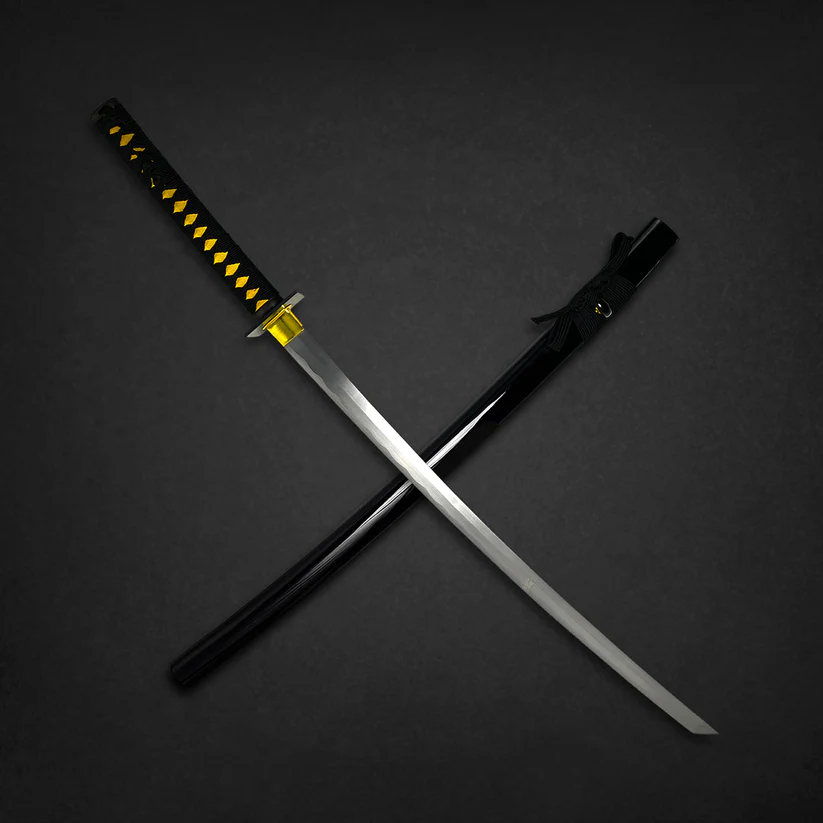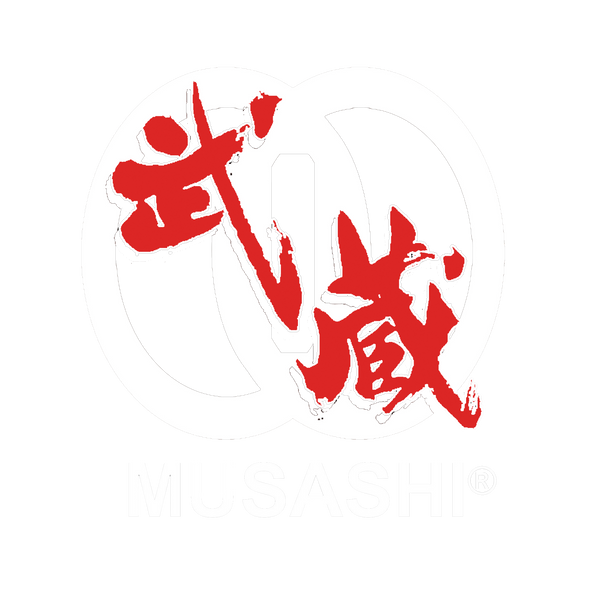
Authentic vs. Replica Samurai Swords: What’s the Difference?
Share
Real samurai swords are very different from fake ones in how they’re made, what they’re made of, and their place in history. Real Japanese swords are made with special steel called tamahagane, which is made in special furnaces and folded many times to make it stronger. True katanas show beautiful wave patterns on the blade, have handles covered in stingray skin, and use real brass or copper parts. These swords cost between $10,000 and $700,000. Cheap copies made in factories don’t have these special features and lack papers proving their history. When you know these differences, you can see the amazing skill needed to make real Japanese swords.
Key Takeaways
- Authentic swords use tamahagane steel and traditional folding techniques, while replicas use lower-grade metals and mass-production methods.
- Genuine katanas feature natural, uneven hamon patterns from traditional forging, whereas replicas show uniform or artificial wave patterns.
- Authentic swords cost between $10,000-$700,000 for historical pieces, while basic replicas typically sell for under $200.
- Real samurai swords come with verification papers from Japanese organizations, while replicas lack official documentation.
- Authentic handles use ray skin and silk wrapping with brass fittings, while replicas substitute synthetic materials and lighter metals.
The Art of Traditional Japanese Swordmaking
Japanese swordmaking is one of the finest and most advanced ways of making metal tools ever created.
Japanese sword makers who have special permits make their blades the old way, using a special kind of steel called tamahagane, which comes from iron sand. This steel is known for being both strong and bendable. To make a high-quality sword, they carefully fold and hammer the metal many times, which creates unique patterns in the steel.
Real Japanese swords get their sharp cutting edge through a special heating process that uses clay. This creates both a hard edge and a beautiful wavy pattern on the blade.
To protect this old craft, sword makers can only make two long swords or three short ones each month. Each sword needs papers from special groups like the Nihon Bitsu Token Hozon Kyokai to prove it’s real, showing how important these swords are to Japanese history and culture.
Understanding Tamahagane Steel and Its Significance
Tamahagane steel is the special metal used to make real Japanese swords. It comes from iron sand and is made in a special furnace called tatara.
This old way of making steel creates a metal that makes true katana swords better than modern copies. Expert sword makers fold and hammer the steel many times to make blades that are strong and can bend without breaking.
What makes tamahagane steel special: 1. Stays sharp longer than regular steel 2. Has a special inner structure from being folded many times 3. Can bend and spring back thanks to careful heating and shaping 4. Won’t break easily but still stays very hard Tamahagane means more than just being good steel - it shows how Japanese metal workers have mastered their craft over hundreds of years. While new swords might look like the old ones, they can’t match the special qualities that make real tamahagane swords so important in history.
Identifying Authentic Hamon Patterns
The most striking feature of a real Japanese sword is its hamon pattern - the wavy line that forms when the blade’s edge is hardened differently than the rest of the sword.
Skilled sword makers show their expertise by making real hamon patterns that have natural unevenness and gentle changes in their appearance, which come from old-fashioned forging methods.
These detailed patterns help tell real swords from fake ones, which often have plain or copied designs. A true hamon can only be made by carefully heating high-quality tamahagane steel, creating waves and changes that prove the maker’s skill.
When checking if a sword is real, collectors should look for natural-looking changes and special features that come from true hardening processes.
Material Quality and Construction Methods
Real Japanese swords stand out from copies mainly because of how they’re made and what they’re made from.
Real katana swords are made from special high-carbon steel called tamahagane, which comes from iron sand using old Japanese methods. The way these swords are made creates real wave patterns on the blade through careful folding and hammering.
The main building differences are:
- Real swords have a full metal core, while copies have only a partial core.
- Real sword handles use real ray skin and silk cords, while copies use fake materials.
- Real swords use strong brass or copper parts, not cheap light metals.
- Real swords have many steel layers from careful folding, unlike mass-made copies.
These differences in materials and building methods affect how well the sword works, how it feels in hand, and how true it looks to tradition.
Historical Certification and Documentation
Experts can verify real Japanese katanas through careful checks and proper paperwork. True katanas get special certificates from trusted groups like the NBTHK, which mark them as either well-preserved or highly important works of art. These papers prove the sword is genuine.
Real katanas come with detailed records that show how they were made, what they’re made of, and who made them. These records help prove the sword’s history and make it more valuable to collectors.
Having the swordmaker’s name and official papers sets real katanas apart from copies, which don’t have proper proof of being real. This careful record-keeping helps protect old Japanese swords’ cultural value and worth, while also helping buyers avoid fake pieces.
Pricing and Value Assessment
Real Japanese katanas and replicas show very different prices and worth in the market. True katanas, made by certified sword makers, sell for $10,000 to $700,000 because of their deep cultural and historic worth. Good-quality copies usually cost about $250, giving the right look without the big price tag.
- Real katana swords keep growing in value because of their history and old-style crafting methods.
- Basic real katanas start at $200-$300, and are better made than factory-produced ones.
- Fake katanas sold illegally trick buyers with misleading prices and hurt the market.
- Well-made copies are a good choice for people who want the katana look without spending too much.
The big difference in price shows how much real skill, good materials, and Japanese culture add to the worth of genuine katanas.
Essential Physical Characteristics
Real katanas look and feel different from fake ones in several key ways.
True katanas are made from special Japanese steel that shows unique wave-like patterns on the blade from the way they were heated and folded.
The handle of a real katana uses real wood and the skin of stingrays, covered with silk or cotton wrapping.
The sword’s metal parts and scabbard show fine, careful work by skilled craftsmen.
Fake katanas use cheaper metals like stainless steel or aluminum, with fake patterns that don’t match the deep, complex designs of real ones.
Real katanas also come with papers from expert groups that prove who made them and where they came from.
The Role of Licensed Swordsmiths
Japanese swordsmiths who are licensed to make swords, called katana-kaji, are the best at making traditional swords using old methods. They must train for at least five years to learn how to make real katanas using special tamahagane steel.
These skilled makers help keep this important tradition alive by following these rules:
- The government only lets them make two long swords or three short swords each month.
- They must know how to work with tamahagane steel, which comes from iron sand.
- They need approval from the Nihon Bitsu Token Hozon Kyokai (NBTHK) to show their work is good enough.
- They must use the old ways of making swords to keep the real Japanese style alive.
Common Features of Mass-Produced Replicas
Mass-produced fake Japanese swords look and feel very different from real katanas in how they’re made and what they’re made of. While real katanas use special tamahagane steel, fake ones are made with cheaper metals like stainless steel or aluminum. These copies skip the careful sword-making steps that true craftsmen use, making them weaker and less well-made.
You can spot a fake sword by looking at its hamon - the wavy line pattern on the blade. Real katanas have natural, one-of-a-kind patterns, but fake ones show plain or machine-made designs.
The fake swords also cut corners by using plastic or cheap metal parts instead of quality materials for the handle and fittings. Without proper papers and certificates that come with real katanas, it’s hard for buyers to know if they’re getting something genuine.
Where to Source Genuine Katanas
Real katanas must be bought from trusted sellers who know what they’re doing. When looking for a real samurai sword, it’s very important to check if the seller is honest and well-known.
Good places to buy include special sword shops and trusted online stores like Swords of Northshire, which sell real samurai swords made by skilled craftsmen.
You’ll need: 1. Papers and certificates from Japanese groups that check swords 2. Tips from people who collect swords and teach martial arts 3. Money to spend - real swords cost from hundreds to thousands of dollars 4. Papers that show who made the sword and where it came from
If you want to collect real katanas, buy from sellers who can give you all the needed papers and are open about how they do business. This helps make sure the sword is real and follows Japanese traditions.
Frequently Asked Questions
What Makes a Samurai Sword Authentic?
A real samurai sword must be made the old way by skilled makers using special Japanese iron. It needs proper papers to prove it’s genuine, shows unique wavy patterns on the blade, and has a strong core that runs through the whole sword. These swords carry deep meaning in Japanese history and are crafted with great care.
Is It Illegal to Have a Fake Katana?
Fake katanas are usually legal to own in most places, especially if you want to display them or use them for practice. But rules can be quite different depending on where you live, so it’s smart to check what your local laws say about them.
What Is the Holy Grail of Samurai Swords?
The Honjo Masamune stands as the most prized samurai sword ever made, created by the great swordmaker Masamune. Its rich history and proven realness make it a treasured piece of Japanese culture that cannot be valued in money.
How Much Does a Real Samurai Sword Cost?
Real samurai swords cost between $1,000 and $700,000. The price depends on how well they’re made and what methods were used to make them. If you want a sword made by hand in Japan by a master craftsman, prices usually begin at $20,000. These swords can grow in worth over time.
Conclusion
The difference between authentic and replica Samurai Swords comes down to traditional craftsmanship, quality materials, and careful attention to detail. While replicas work well for display and practice, real nihonto showcase the special steel-making process of tamahagane, precise heating methods, and proven history. Only certified swordsmiths can make these masterpieces, keeping Japan’s ancient sword-making traditions alive. For the best selection of quality swords that balance authenticity and value, visit Musashi Swords today to explore their carefully curated collection.
